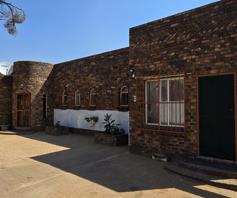
For a warm and cosy look in any room, natural timber is always a favourite. Tongue-and-groove boarding is easy to fit, durable and comparatively inexpensive, lending itself to many imaginative designs. Not only does it look good, but it is also the ideal solution for uneven and unsightly walls.
Many timbers can be used for interior decoration, but the easiest to use are the tongue-and-groove variety that have interlocking joints machined along each side. These can be obtained in a number of profiles and timber varieties, allowing you to choose the colour and texture that best suits your particular room. They can also be painted with enamel paint, making them suitable for bathroom and kitchen applications. These planks are usually 13mm to 25mm thick, and 76mm to 152mm wide.
When planning your design, you should consider whether you want to finish the whole of a room in tongue-and-groove boards, or just part of it, leaving some areas in a contrasting finish. You can also choose whether the boarding will best fit the space in a vertical, a horizontal or a diagonal design. Remember, for vertical boarding, always start your first board in an internal corner of the room, groove side to corner. Set it to a true vertical using a plumb line or a spirit level. Horizontal boarding should start with a level board set groove downwards at about 25mm from the floor. For diagonal boards, start with the first board which should be the full length from floor to ceiling.

The method of fixing timber lining depends on your type of wall. If you are fixing it to a masonry wall, you will have to fit a support framework made of battens attached directly to the wall. Timber frame walls may also need battening unless the frame members are close enough together to make this unnecessary. Drive nails into the walls in intervals to locate the frame members.
Before fixing any battens, make sure that the walls are dry. If the walls have a tendency to damp or are subject to condensation (such as in the kitchen or bathrooms), you can affect this from affecting the boards by treating them with a special damp-proofing compound for interior use. You can also use a bitumen-impregnated paper, aluminium foil or 500-gauge polythene sheeting. These are fixed to the wall using neat PVA adhesive. Always store the boards for at least a week before fitting, preferably in the room that is to be panelled, to allow the timber to acclimatise.
Once this has been done and the battening is completed, you can nail the boards into pace.

Fitting the boards around problem areas can be tricky, but it remains a great way of hiding unsightly piping, electrics and uneven walls. Tongue-an-groove panelling can be used to create an interesting effect on the ceiling, to create a feature wall or even to hide geysers or other built-in necessities that would best serve the décor if well hidden. The most important thing to ensure for a good-looking end result, is to make sure that the boards are fitted together tightly and that you leave a gap top and bottom for movement.
Finally, give all the surfaces at least two coats of clear lacquer for a natural wood finish, or use coloured enamel paint to decorate and seal.– Antonella Desi
Readers' Comments Have a comment about this article? Email us now.
Unfortunately tongue and groove pine expands and contracts, leaving a messy paint job in the grooves. Had it in our bathroom and even with an extractor fan it moved, so after a few years, took it off of put on grooved supawood that looks exactly the same, but without the pine notches and never expands and contracts and 6 years later looks as good as the day it was painted white.- Jeanette







